How to Propagate Lavender
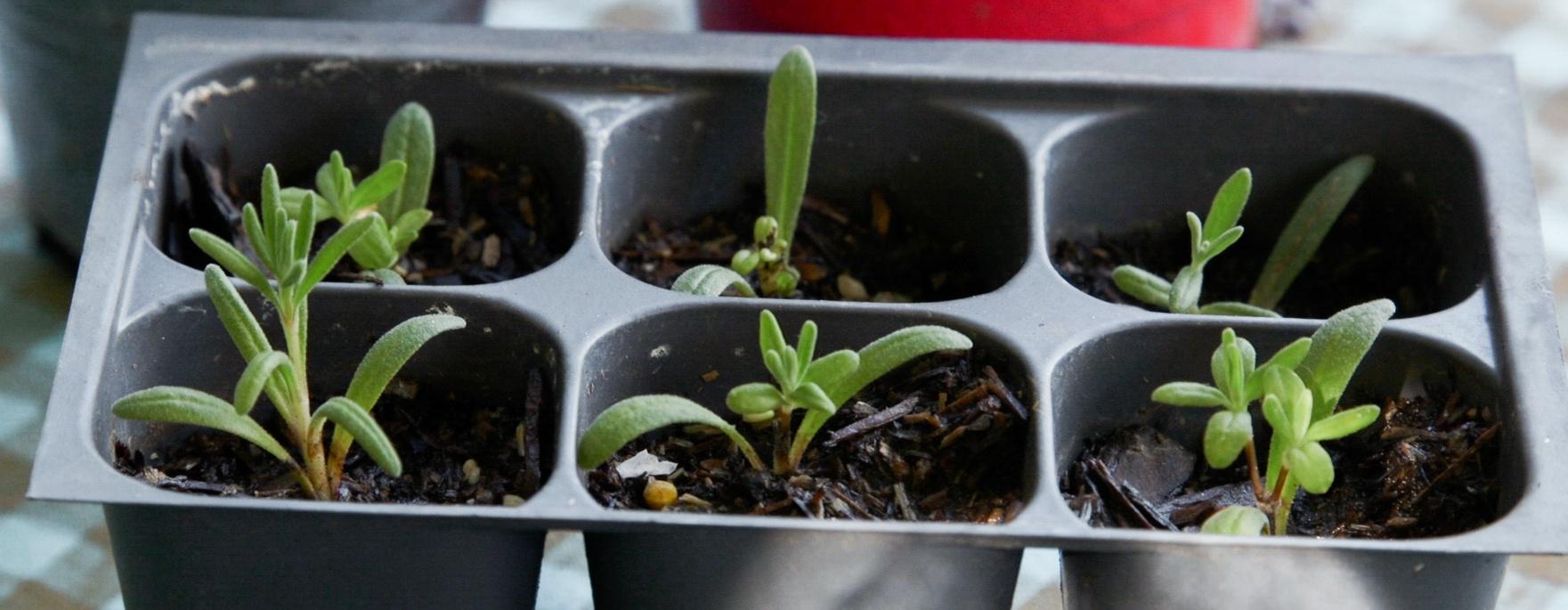

Lavender grows exceptionally well here in Utah, so we wanted to learn more about it. We met up with Nico and Nat Dicou, owners of Lincoln Street Farm, to learn how they propagate lavender and how easy the process is! Along the way we learned some interesting things about lavender propagation, the benefits of lavender, and why falling in love with lavender is so easy.
There are a number of reasons Nico and Nat enjoy propagating lavender. For one, the propagation process is very easy. You’re more likely to successfully grow lavender from propagation than from seed. Lavender seeds can take a long time to germinate, in fact, from one to three months! And as Nico said, “and that’s even under the most perfectly temperate conditions.”
So if you don’t have the “germination patience,'' a fun and easy way to grow lavender is by propagation.
Propagating lavender is also a nice way to continue the life of your favorite lavender plant. Propagation from a particular lavender plant is also a sure way to get the look and smell you adore from a friend or neighbor’s plant. Just ask for a cutting!
.png)
There are only a few materials needed to propagate lavender:
This should be an established lavender plant.
As you can see in the video, some of the clippings are very small. Nat is using regular craft scissors, but pruning snips or embroidery scissors would work as well.
Propagating lavender will work without rooting hormones, but the hormones speed along the process. A variety of rooting hormones can be found on the internet, you can also check your local garden supply center.
You can use a seed starting mix. In our video Nico and Nat suggest a homemade blend of vermiculite and peat moss, which is also a popular growing medium. One part peat moss to two parts vermiculite is a common formula.
If you're upcycling, as Nico and Nat like to do, just make sure your trays or cups are sterile. Using a humidity dome will create a cozy, greenhouse-like environment and help keep your starts moist.
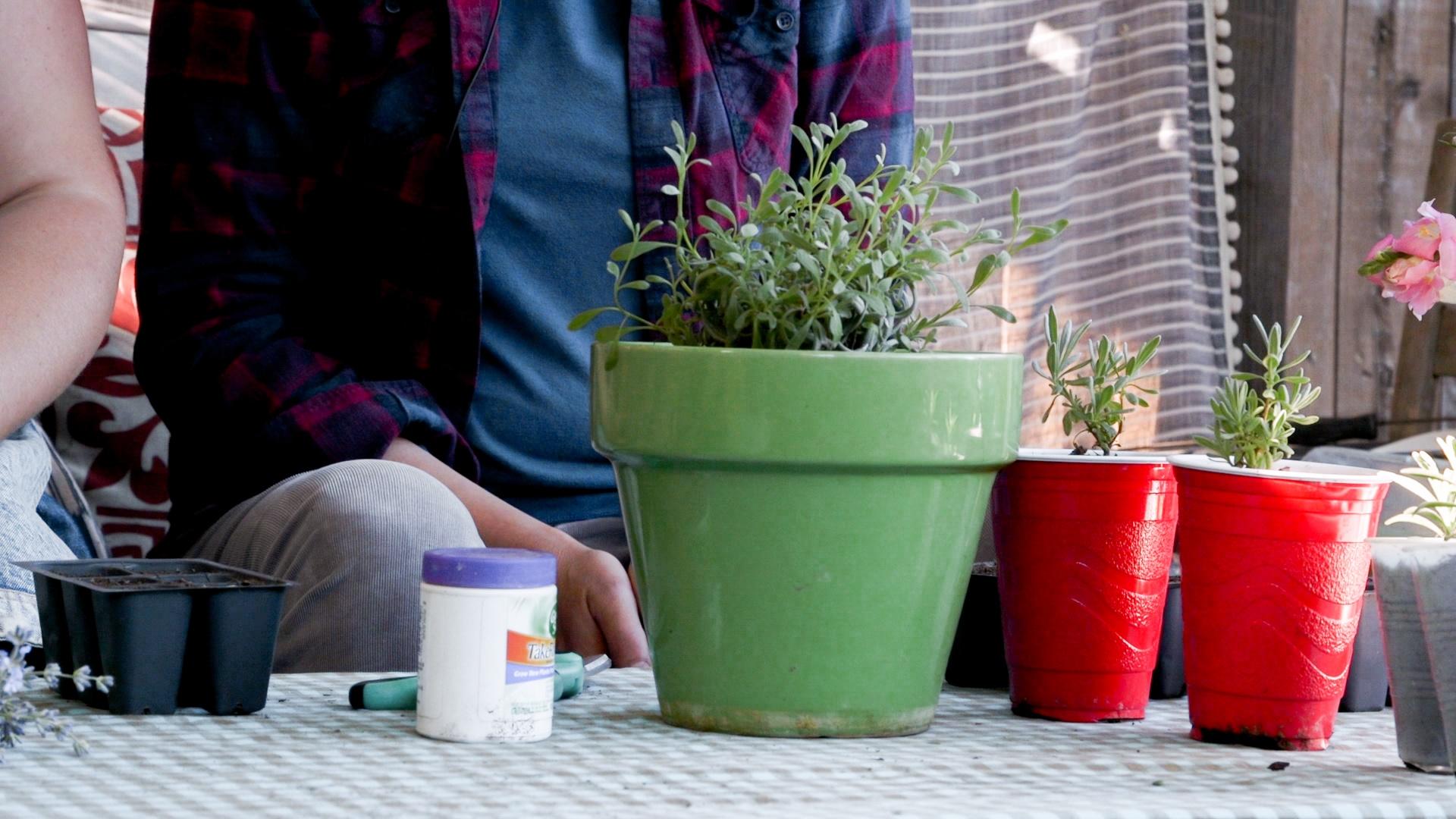
Before selecting the clipping you’d like to take from the lavender plant, make sure your scissors or snips are sterile.
There are hardwood and softwood cuttings, which we’ll explain below.
Nat and Nico demonstrate the softwood cutting technique. Softwood cuttings tend to root faster than hardwood cuttings.
Softwood cutting: Select a soft, pliable branch of new growth and cut about 1.5–2 inches off.
Trimming: Trim all the leaves off the cutting except the very top two. As Nico explained, “you're going for that ‘Y’ look.”
In Nat’s demonstration she gently spread the two top leaves and trimmed the tiny inner buds off as well. This will help stimulate new growth.
Hardwood cutting: This propagation technique is used more in the cooler seasons when the plant doesn't have new growth and isn’t blooming.

For hardwood cuttings, look for a healthy branch of the lavender plant and cut about 6 to 8 inches off. Strip off all the side growth leaving about 2 inches of growth at the top. With all the side growth stripped off you can see the nodes where the leaves grow. Make a cut right below a node. Dip the end in the rooting hormone and stick the cutting in the growing medium.
Because the softwood cuttings are so pliable, you may need to trim the end before dipping it in the rooting hormone so that it doesn't bend or fall over in the growing medium.
Sprinkle some of the rooting hormone in a small dish or container. You don’t want to dip the clipping directly into the supply. Dip the end of the cutting into the rooting hormone. Gently stick it into the starting mix. Voilà!
Lavender softwood cuttings can take root in two to four weeks. Lavender cuttings can take root without a rooting hormone, but using one can speed up the growing process.
After a few weeks, if you're so curious you can’t handle it, you can check if it’s taken root by giving it a very gentle tug. But if the little start is growing and looking healthy, there’s no real reason to worry it hasn’t taken root.
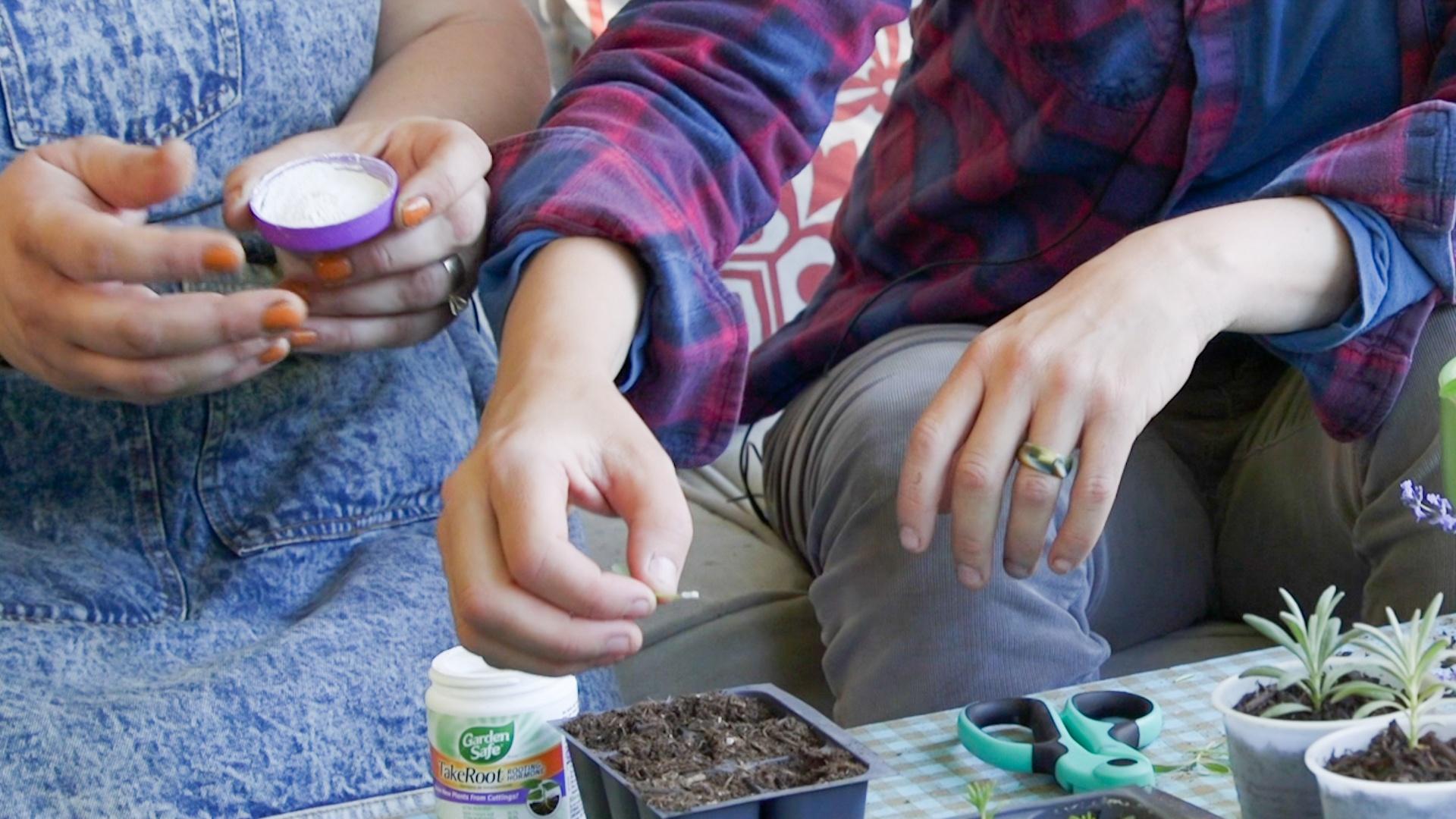
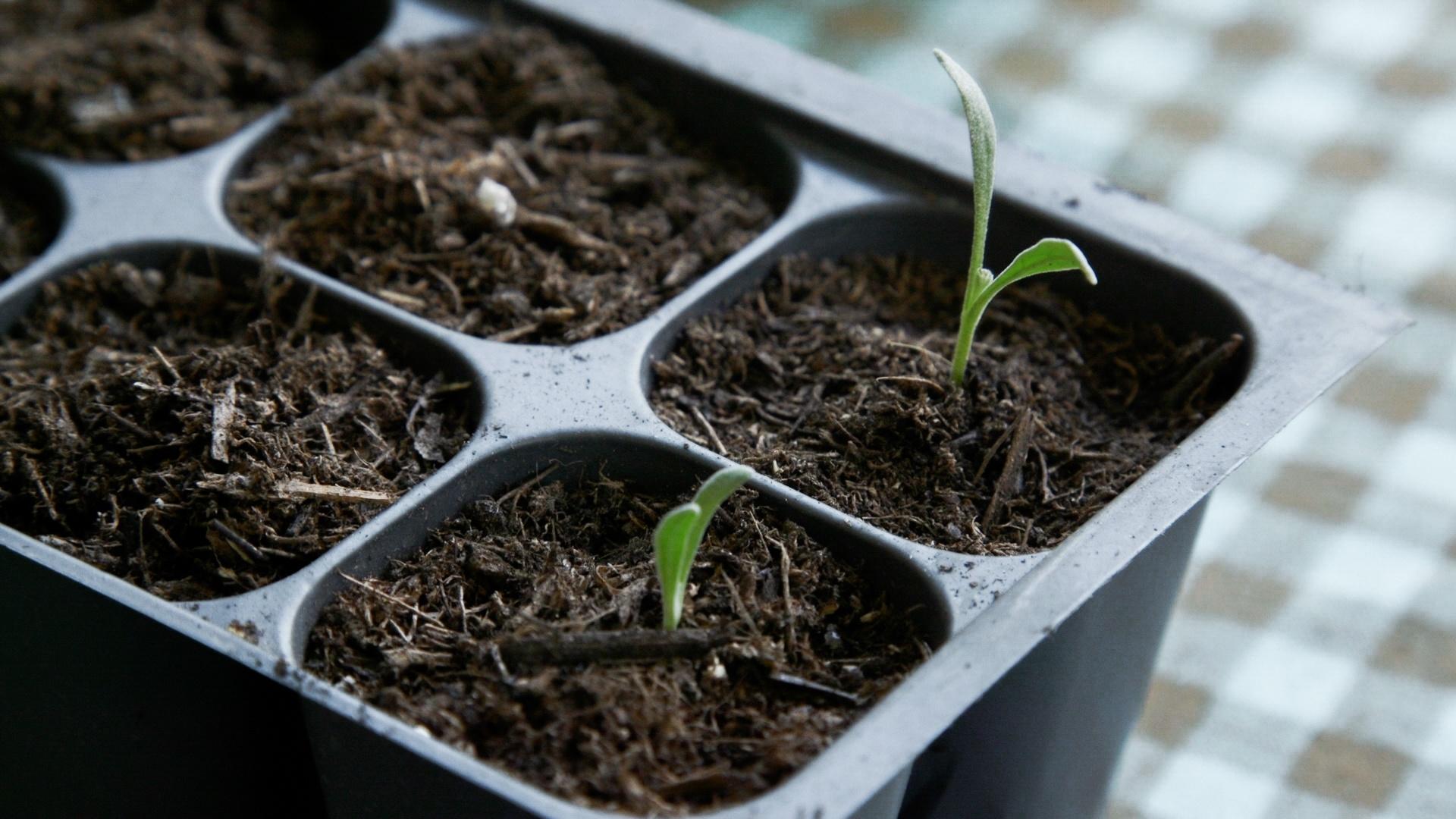
Nico and Nat keep their lavender babies growing by keeping them moist with a spray bottle, keeping them under a humidity dome, and using a grow light. You want your growing medium to stay moist, but not necessarily soaking. They also use a heating pad under their trays to keep the starts warm.
Like all starts, lavender babies need a lot of light. Nico and Nat keep their new start under a grow light for about 7 hours a day. Having a grow light isn’t a must have, but it does help a lot.
Here in Northern Utah, Nico and Nat recommend planting your lavender in the ground during the warmer months, between late spring to end of summer.
Utah can have some pretty harsh winter conditions, so according to Nico, it’s best to wait to transplant a larger lavender plant that has woody growth. Nat also suggested transplanting to the ground earlier in the warm season so that the plant has time to establish itself before the winter.
Lavender species are native to many sunny, dry places around the world, so it loves Utah’s arid climate and thrives here. It’s also drought tolerant.
Lavender first blooms here in Utah between June and July. The stems and flowers grow quickly so if you harvest the first growth of flowers, you will get a second harvest before the season is over.
Bees and other garden pollinators also love the flowers, so growing lavender is a great way to attract pollinators to the rest of your garden.
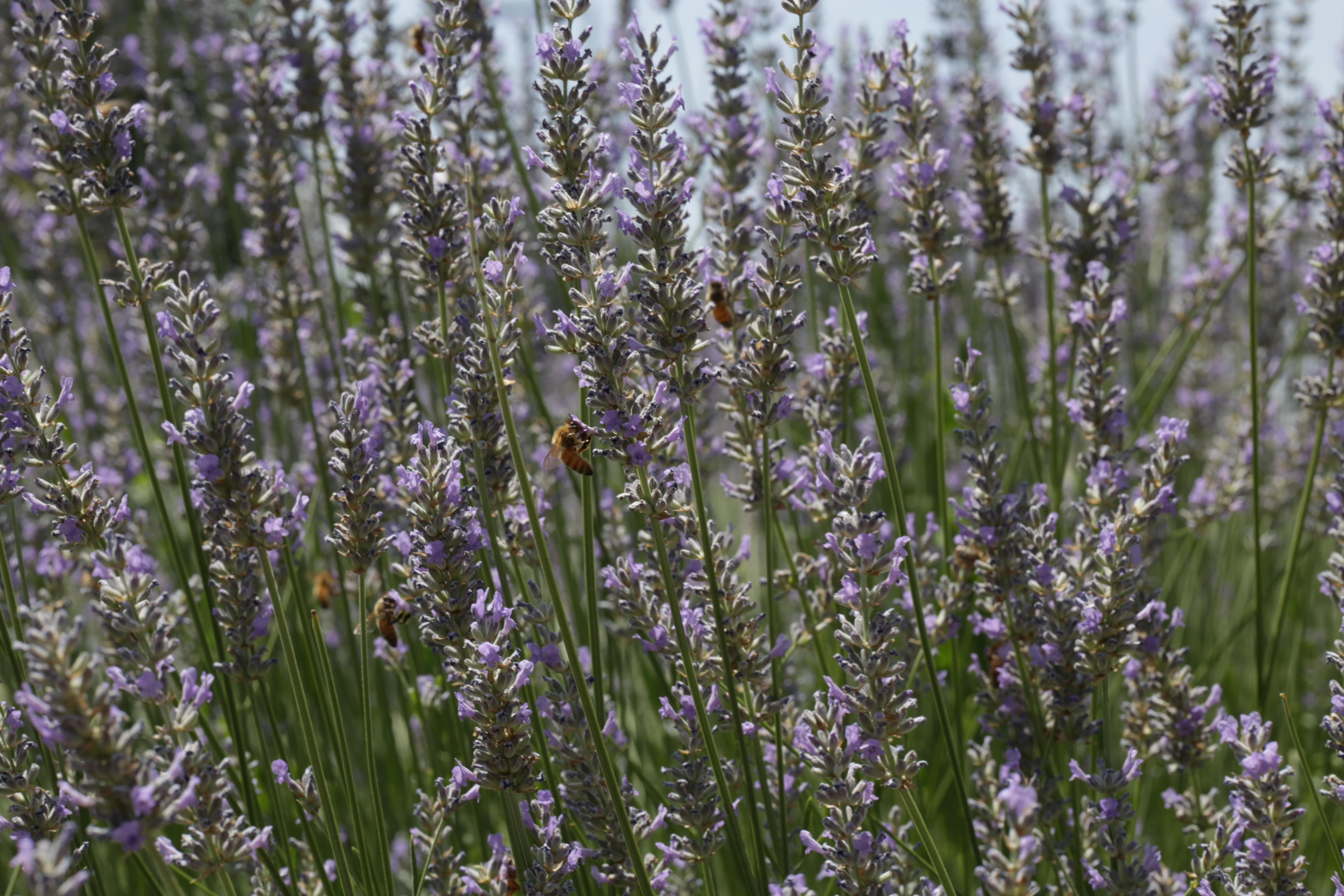
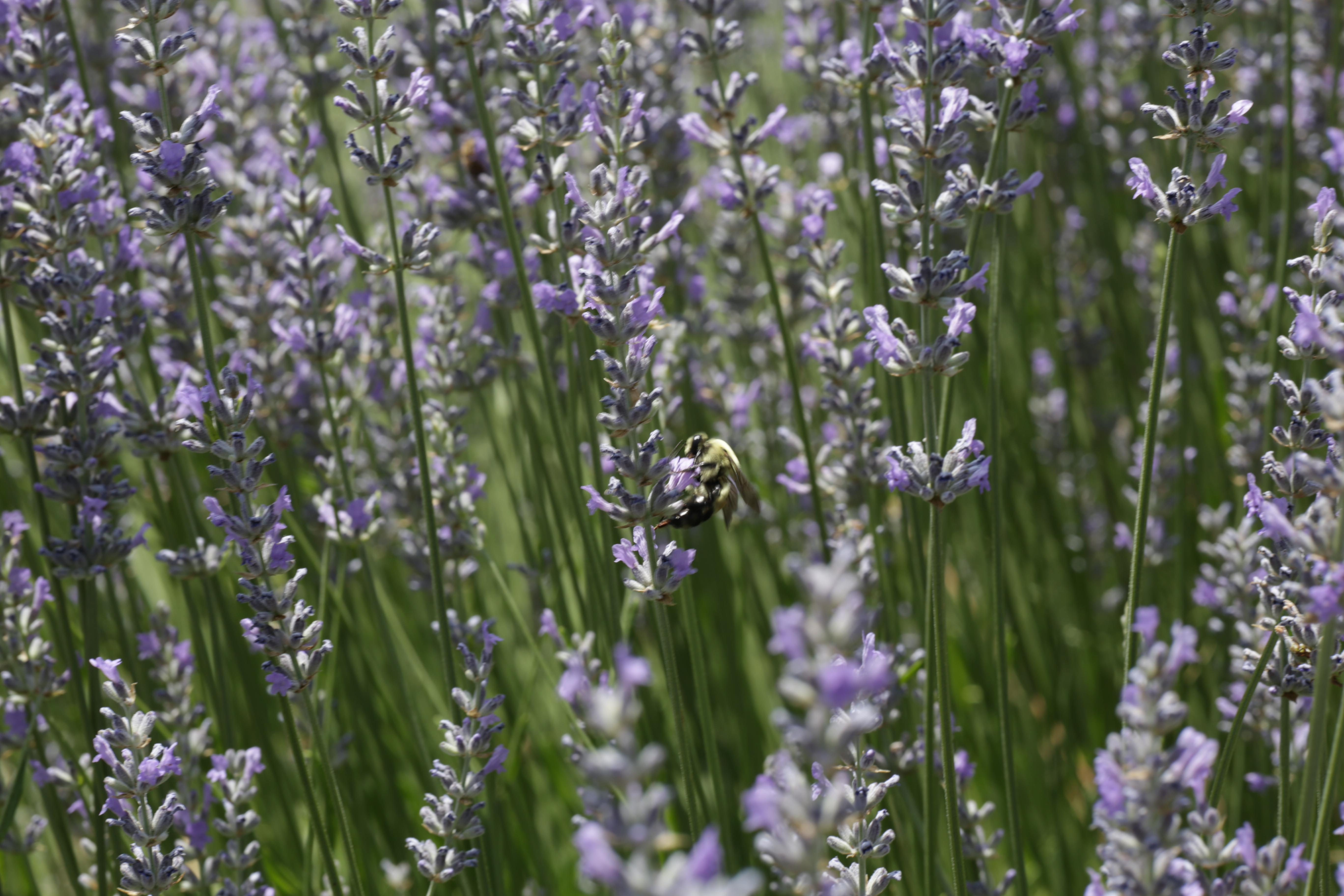
You’ve probably heard of French Lavender or English Lavender, but did you know there are 47 known species of flowering lavender?!
Most people propagating lavender look for a mother plant of a particular species with desirable traits: things like overall vigor of the plant, aroma, plant shape, and height. Or they just want to duplicate that special plant from their grandmother's garden or childhood home.
Always ask before taking a cutting from a neighbor’s plant. It’s also a nice way to start up a conversation around lavender propagation, but you also might find out more information about the particular plant, how well it grows and flowers, or if it’s had any issues or diseases in the past.
As Nico said about asking friends and neighbors for a lavender clipping, “you want your neighbor to kind of share in the goodness of your garden and you can share in the goodness of their garden. And it’s just a wonderful symbiotic thing that builds community and the gardening network that we have here in Salt Lake City.”
Lavender uses are limitless; let your imagination fly. Throw some in your bathtub, in your french press with your coffee, or create a cut flower bouquet.
Here are some ways Lincoln Street Farms have used lavender, along with some additional suggestions.
Sachets can be used to freshen up your sock drawer or car, and also make a great gift.
Sew small cotton bags and fill with rice and lavender buds.
Lavender leaves, buds, and flowers can be infused in hot water and used for hot or iced tea.
I have a friend who occasionally puts some dried flower buds with coffee grounds in her french press. Add some milk and honey and you’ve got yourself a very tasty coffee.
Need I say more?
Nico and Nat have used their lavender in their handmade soaps.
Place buds or flowers in clear suckers, it’s really cute!

As you can see, propagating lavender is quick and easy! It’s so easy you’ll want to make sure you have plenty of space to house your lavender starts. But if you tend to go overboard, they make great gifts! Or you can hoard them all, and knock out any visitor with a lavender aroma that hits them at the front door.
Nico and Nat love spreading their lavender babies among their growing community of gardeners and followers. A little lavender plant will brighten anyone's day!
If you live in Utah and have a garden or garden project that you'd like to be featured on Modern Gardener, click here!